Poinsettias are a popular holiday plant, but they can be finicky. If your poinsettia is dying, there may be a simple explanation. This article will explore 9 causes of poinsettia dying and ways to revive it.
Signs of Dying Poinsettia
Poinsettias are a popular holiday plant, but they can be tricky to keep alive. Here are some signs that your poinsettia is dying, and what you can do to revive it.
If your poinsettia’s leaves are drooping or turning yellow, it’s a sign that the plant is not getting enough water. Make sure to water your poinsettia regularly, and keep the soil moist but not soggy.
Let the soil dry out slightly between watering, and be sure to drainage holes in the pot so that excess water can escape. If the leaves are turning brown and falling off, the plant is probably getting too much water.
Move your poinsettia to a cooler location, out of direct sunlight. If the leaves are wilting and the stems are soft, it’s a sign of too much heat.
Poinsettias need bright, indirect light. Move the plant to a location where it will get the right amount of light. If the leaves are curled or distorted, it’s a sign of too much or too little light.
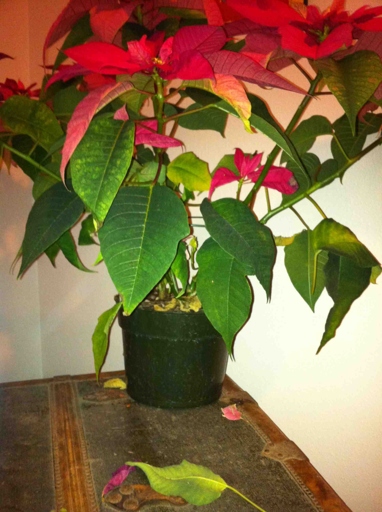
If you see any of these signs, don’t despair! With a little care, you can revive your poinsettia and keep it alive for many holidays to come.
Poinsettia Wilting and Leaves Curling
If the plant is too cold, the leaves will curl to protect the plant from the cold. Improper watering is the most common cause of poinsettia wilting and leaves curling. Poinsettia wilting and leaves curling is a common problem with this popular holiday plant. Overwatering can cause the roots to rot, while underwatering will cause the plant to wilt. While there are many possible causes, there are a few that are most common. Poinsettias need bright, indirect light to thrive, and too much or too little light can cause the leaves to curl. Temperature can also be a factor, as poinsettias prefer cool temperatures. Another common cause is too much or too little light.

With a little troubleshooting, you should be able to revive your wilting poinsettia and keep it looking beautiful all season long. There are a few things you can do to revive a wilting poinsettia. If the plant is getting too much light, move it to a shadier spot. If it is not getting enough light, move it to a brighter spot. If the soil is too wet, allow the plant to drain and dry out before watering again. If it is too hot, move it to a cooler spot. If the soil is too dry, water the plant thoroughly. If the plant is too cold, move it to a warmer spot. Second, check the light levels and adjust as needed. Finally, check the temperature and make sure the plant is not too cold or too hot. First, check the soil to see if it is too wet or too dry.
Poinsettia Dropping Leaves
The most common cause is overwatering, which can cause the leaves to turn yellow and drop off. Poinsettia dropping leaves is a common problem that can be caused by a number of different factors. Other causes include too much or too little light, temperature changes, and pests.
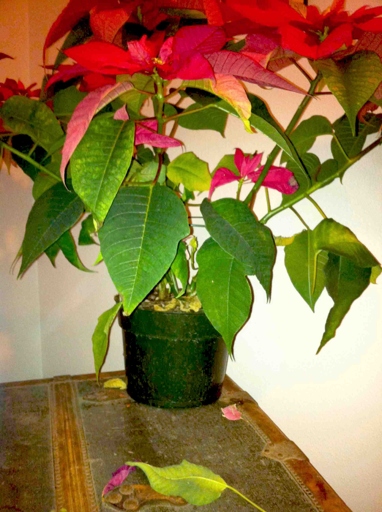
Poinsettias prefer warm, humid conditions. Finally, check the temperature around the plant. If the temperature is too cold or too hot, the leaves will turn yellow and drop off. If the plant is overwatered, allow the soil to dry out completely before watering again. There are a few ways to revive a poinsettia that is dropping its leaves. Poinsettias need bright, indirect light to thrive. If the plant is in too much or too little light, the leaves will turn yellow and drop off. Second, adjust the amount of light the plant is getting. First, check the plant for signs of overwatering, such as yellow leaves or wet soil.
If you follow these tips, you should be able to revive your poinsettia and keep it healthy for years to come.
Poinsettia Turning Yellow
One common problem is that the leaves turn yellow. There are a few possible causes of this. Poinsettias are a popular holiday plant, but they can be finicky.
One possibility is that the plant is getting too much sun. If you think this might be the problem, try moving the plant to a shadier spot. Poinsettias need bright light, but too much sun can cause the leaves to turn yellow.
Poinsettias need to be kept moist, but not soggy. Another possibility is that the plant is not getting enough water. If the leaves are turning yellow and the soil is dry, try watering the plant more frequently.
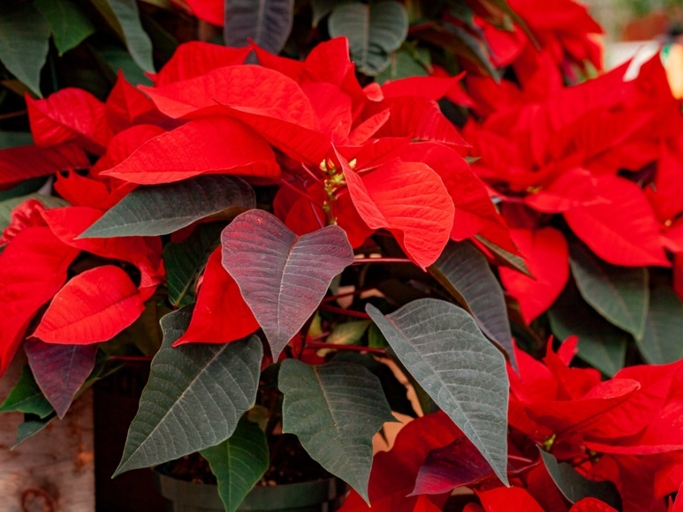
If you think this might be the problem, try fertilizing the plant more often. Finally, it could be that the plant is not getting enough nutrients. Poinsettias need to be fertilized every few weeks.
With a little care, you can revive your plant and enjoy its beautiful red leaves all holiday season. If your poinsettia’s leaves are turning yellow, try one of these solutions.
Poinsettia Turning Black
There are a few possible causes for this. One common problem is that the leaves turn black. Poinsettias are a popular holiday plant, but they can be finicky.
One possibility is that the plant is not getting enough light. If the plant is in a dark room or near a window, the leaves may turn black. Poinsettias need bright, indirect light to thrive.

If the leaves are turning black and the soil is moist, the plant is getting too much water. Poinsettias are susceptible to root rot, so it’s important to let the soil dry out between waterings. Another possibility is that the plant is getting too much water.
Finally, the plant may be getting too much or too little fertilizer. If the plant is being fertilized too often, the leaves may turn black from fertilizer burn. If the leaves are turning black and the plant is not being fertilized, it may need more fertilizer. Poinsettias need to be fertilized every two weeks during the growing season.
With a little care, you can revive your plant and enjoy its beautiful red leaves all holiday season. If your poinsettia’s leaves are turning black, try adjusting the light, water, and fertilizer.
What is Killing My Poinsettia?
Poinsettias are a popular plant during the holiday season, but they can be finicky. If your poinsettia is dying, there could be several reasons why.
Poinsettias need at least six hours of sunlight each day, so if it’s not getting enough light, it will start to wilt. One reason could be that the plant is not getting enough light.
Poinsettias like to be kept on the drier side, so if you’re watering it too often, it could start to die. Another reason could be that the plant is getting too much water.
Finally, the plant could be getting too much or too little fertilizer. Poinsettias need to be fertilized every two weeks, so if you’re not doing that, the plant will start to suffer.
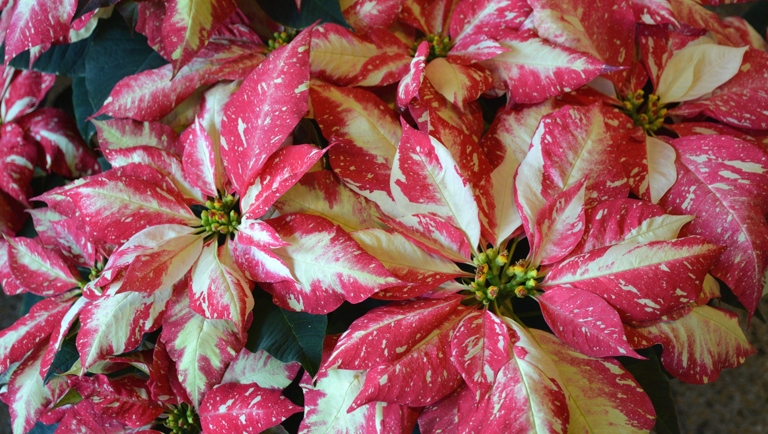
If your poinsettia is dying, try to figure out what the problem is and take steps to fix it. With a little TLC, you should be able to revive your plant and keep it healthy.
Overwatering
But be careful not to overwater, as that can lead to root rot and fungal diseases. If the leaves start to droop, that’s a sign that the plant needs water. The best way to water a poinsettia is to allow the soil to dry out completely between watering. Poinsettias are a popular holiday plant, but they’re also one of the most finicky. Overwatering is one of the most common problems with poinsettias, and it can be fatal.
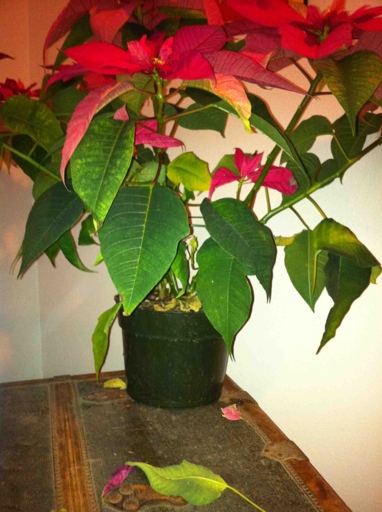
There are a few things you can do to try to revive it. But if they’re still firm, you can try replanting the poinsettia in fresh, dry potting mix. If they’re mushy or black, they’re probably too far gone. First, remove the plant from its pot and check the roots. Water it well, then let it drain completely. If you think you’ve overwatered your poinsettia, don’t despair. Put the plant in a bright spot, but out of direct sunlight, and keep an eye on it. With any luck, your overwatered poinsettia will make a full recovery.
Solution
If your poinsettia is dying, there are a few things you can do to revive it. Poinsettias are a popular plant during the holidays, but they can be finicky.
First, check the plant for signs of pests. If you see any pests, remove them and treat the plant with an insecticide.
Poinsettias need well-drained, moist soil. If the soil is dry, water the plant. Next, check the soil. If the soil is soggy, replant the poinsettia in fresh, well-drained soil.

Finally, check the light. If the plant is in too much or too little light, it will start to die. Move the plant to a spot where it will get the right amount of light. Poinsettias need bright, indirect light.
With a little care, you can revive your poinsettia and keep it healthy for many holidays to come.
Poor Quality Soil and Drainage
One of the main reasons poinsettias die is poor quality soil. The soil should be loose and well-draining, but many times it is too dense and compacted. Poinsettias are a beautiful addition to any holiday decor, but they can be finicky plants. This can cause the roots to rot and the plant to die.
If your poinsettia is already in poor quality soil, try replanting it in fresh potting mix. You may also need to repot it in a larger pot if the roots are crowded. To avoid this, make sure to use a high quality potting mix and avoid over-watering. Let the soil dry out between watering and make sure the pot has drainage holes.
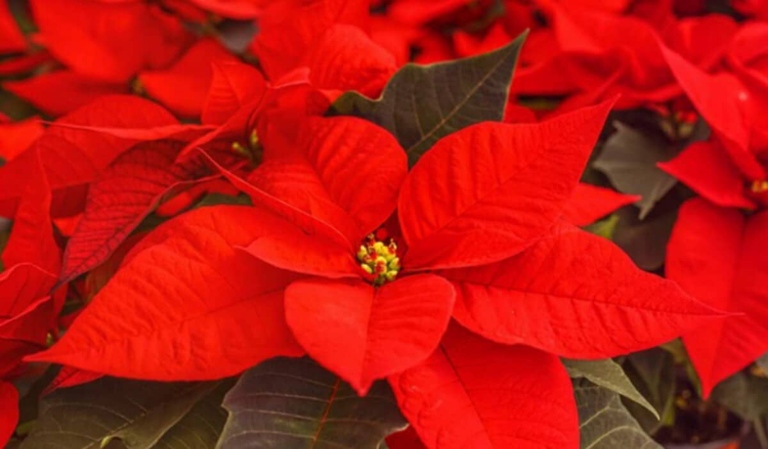
First, check the soil and make sure it is not too wet or too dry. If all else fails, you may need to start over with a new plant. You can also try trimming back the leaves and stems to encourage new growth. If it is too wet, let the soil dry out and if it is too dry, water it thoroughly. If your poinsettia is dying, there are a few things you can do to revive it.
Solution
Poinsettias are a popular plant during the winter holidays, but they can be finicky. If your poinsettia is dying, there are a few things you can do to revive it.
First, check the plant for signs of pests. If you see any insects or eggs, remove them and treat the plant with an insecticide.
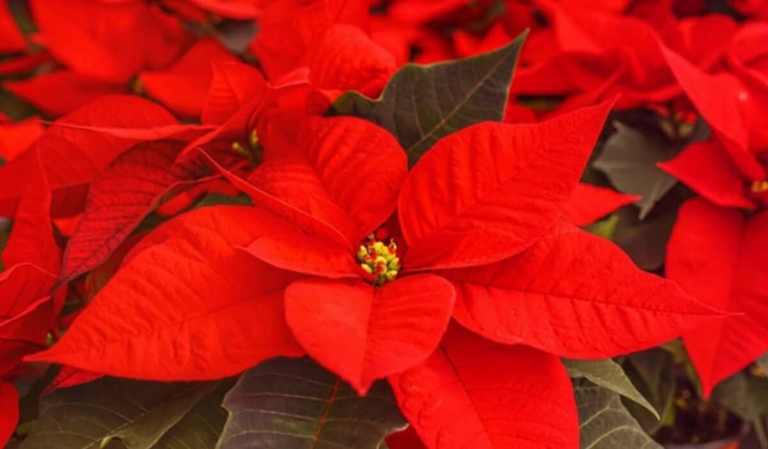
If the soil is too wet or too dry, it can stress the plant and cause it to die. Poinsettias need well-drained, slightly acidic soil. Next, check the soil. Adjust your watering schedule accordingly.
Finally, make sure the plant is getting enough light. Poinsettias need at least six hours of bright, indirect light each day. If the plant is not getting enough light, it will start to lose its color.
If you follow these steps and your poinsettia still doesn’t improve, it may be time to start over with a new plant.
Root Rot
If the plant is not well-watered, the roots will not be able to absorb the water and the plant will die. The fungi can be spread by water, so it is important to keep the plant well-watered. Root rot is one of the most common problems with poinsettias. It is caused by a fungi that attacks the roots of the plant, causing them to rot.
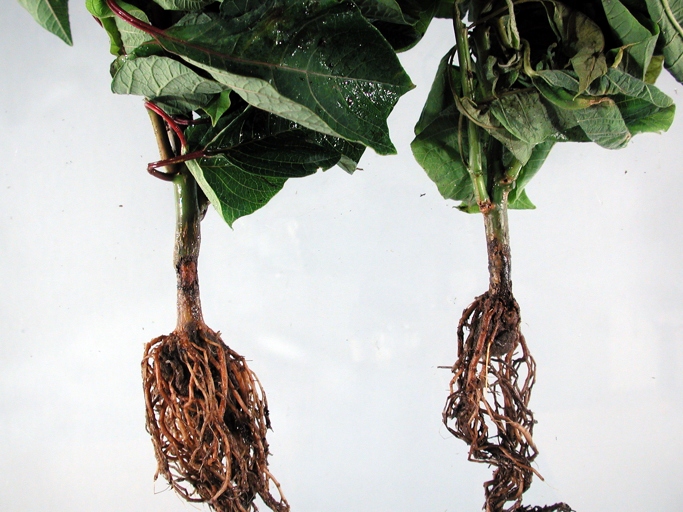
The first step is to remove the plant from the pot and check the roots. If the roots are black or mushy, they need to be removed. There are several ways to revive a poinsettia that has root rot. The plant can then be replanted in a new pot with fresh soil. Be sure to water the plant well and keep it in a warm, sunny location.
If the root rot is severe, the plant may not be able to be saved. In this case, it is best to dispose of the plant and start over with a new one.
Solution
If your poinsettia is dying, there are a few possible causes. Poinsettias are a popular holiday plant, but they can be finicky.
Too much or too little water is a common problem. Allow the top inch of soil to dry out before watering again. Poinsettias like to be kept moist, but not soggy.
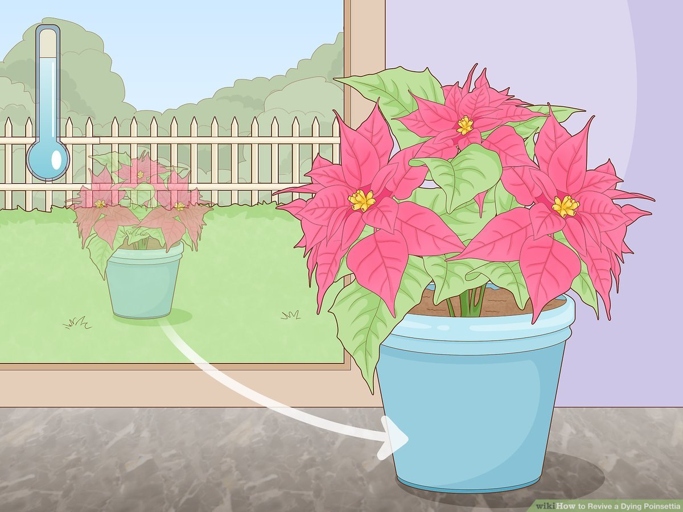
Conversely, if they are placed in direct sunlight, their leaves will scorch. If they are placed in a too-dark spot, they will become leggy and their leaves will lose their color. Poinsettias also need bright, indirect light.
sudden temperature changes can cause their leaves to drop. They like it warm during the day and cool at night. Finally, poinsettias are sensitive to temperature changes.
With a little TLC, you can revive your plant and enjoy its holiday cheer for years to come. If your poinsettia is dying, try to identify the problem and take corrective action.
How to Repot a Poinsettia with Root Rot
One of the most common problems is root rot, which can occur when the plant is overwatered or the potting mix is too dense. Poinsettias are a popular holiday plant, but they can be tricky to keep alive.
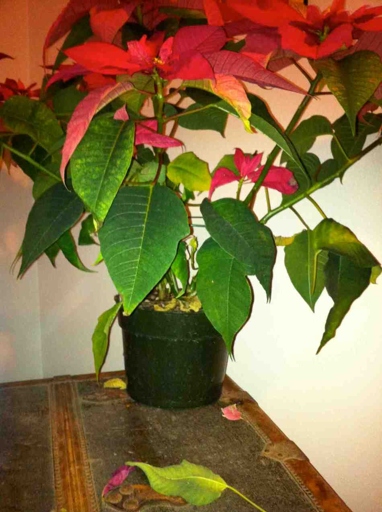
If you think your poinsettia has root rot, the first step is to check the roots. Choose a new pot that’s slightly larger than the old one, and add fresh, well-draining potting mix. If they’re brown and mushy, it’s time to repot the plant. Be sure to water the plant carefully, giving it just enough to moisten the roots without making the mix soggy.
With proper care, your plant should recover and thrive for many holidays to come. If your poinsettia has root rot, it’s important to act quickly.
Underwatering
Underwatering is one of the most common causes of poinsettia dying. If you catch it early, you can revive your plant by giving it a good watering. Be sure to let the water soak all the way through the pot and into the roots. The plant will start to wilt and the leaves will turn yellow and fall off.
Solution
If you see any, trim the damaged leaves or stems. If the soil is dry, water the plant thoroughly. When your poinsettia starts to die, there are a few things you can do to revive it. Next, check the soil for moisture. First, check the plant for signs of pests or disease. If you see any, treat the plant accordingly. Finally, check the plant for any physical damage. With a little care, you can bring your poinsettia back to life.
How to Water Poinsettia from Below
Poinsettias are a popular Christmas plant, but they can be tricky to keep alive. One of the best ways to water a poinsettia is from below.

The water will seep up through the drainage holes in the bottom of the pot and water the plant. To water from below, fill a saucer with water and place the poinsettia in the saucer. Be sure to empty the saucer after a few hours so the plant doesn’t sit in water.
Watering from below is a great way to keep your poinsettia alive and healthy. It’s also important to keep the plant in a bright spot and to avoid letting the soil dry out completely. With a little care, your poinsettia will stay beautiful all season long.
Light Exposure Issues
Poinsettias need about 12 hours of darkness each day in order to produce their colorful bracts. One of the most common problems is light exposure. Poinsettias are a popular Christmas plant, but they can be finicky. If they don’t get enough darkness, the bracts will fade.

If your poinsettia is looking pale, it’s probably not getting enough darkness. Try moving it to a room that gets less light, or covering it with a box or blanket for 12 hours each day. If that doesn’t help, you may need to buy a new plant.
Solution
Poinsettias are a popular plant during the holiday season, but often times they end up dying soon after they are bought. There are a few common causes of poinsettia dying, but there are also ways to revive the plant.

If you think you have over-watered your poinsettia, try letting the soil dry out for a few days before watering again. When they are watered too much, the roots can rot and the plant will die. Poinsettias are native to dry climates and do not need a lot of water. One common cause of poinsettia dying is over-watering.
Another common cause of poinsettia dying is under-watering. Poinsettias need to be watered regularly, but not too much. If the soil is too dry, the leaves will start to droop and the plant will eventually die.
If it is not getting enough light, move it to a brighter spot. If it is too dry, water the plant and try not to let the soil get too dry in the future. Poinsettias need bright, indirect light. Poinsettias prefer cool temperatures, so if it is too warm, move it to a cooler spot. If your poinsettia is dying, there are a few things you can try to revive it. If it is too wet, let the soil dry out for a few days. First, check the soil to see if it is too wet or too dry. Third, check the temperature. Second, check the light conditions.
If you follow these tips, you should be able to revive your poinsettia and keep it alive for many years to come.
Fungal Diseases
One of the most common problems is fungal diseases. Poinsettias are a beautiful addition to any holiday decor, but they can be difficult to keep alive.

Fungal diseases are caused by fungi that live in the soil and on the plant’s leaves. These fungi can cause the leaves to turn yellow, brown, or black. They can also cause the plant to wilt and the flowers to fall off.
First, make sure to plant your poinsettia in well-drained soil. Third, avoid getting water on the leaves. Second, water the plant at the base, not from above. There are a few ways to prevent fungal diseases. Fourth, remove any dead leaves or flowers.
If your poinsettia does get a fungal disease, there are a few things you can do to revive it. Second, water the plant with a fungicide. Third, give the plant more light. Fourth, try repotting the plant in fresh soil. First, try trimming off any affected leaves.
With a little care, you can keep your poinsettia healthy and beautiful for many years to come.
Solution
When your poinsettia starts to wilt, it can be frustrating. There are a few things you can do to revive it. But don’t give up on your plant just yet!
First, check the soil. Allow the plant to drain and dry out for a day or two before watering again. If the soil is soggy, however, that could be the problem. If it’s dry, give the plant a good watering.
If they’re yellow or brown, they may be damaged beyond repair. Next, take a look at the leaves. But if the leaves are just wilted, you can try misting them with water or placing the plant in a humid room.
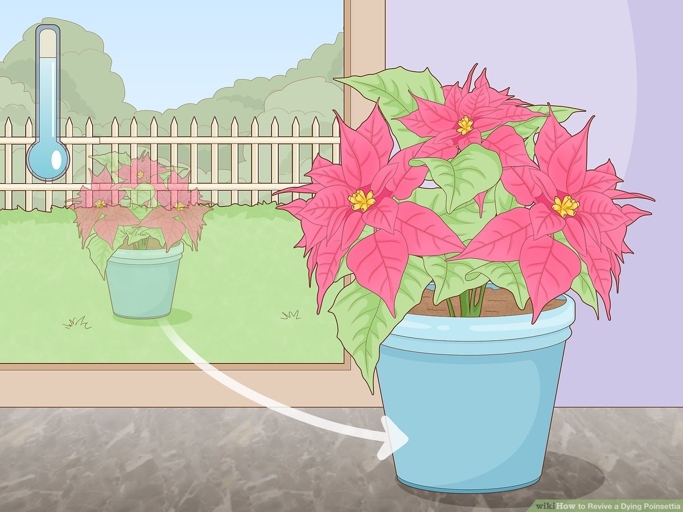
Finally, make sure the plant is getting enough light. If your plant is in a dark room, move it to a brighter spot. Poinsettias need at least six hours of sunlight each day.
With a little TLC, your poinsettia should be back to its beautiful self in no time!
Exposure to Cold Drafts
One of the most common problems is exposure to cold drafts. This can cause the leaves to turn yellow and fall off. Poinsettias are a popular holiday plant, but they can be finicky.
To avoid this, keep your poinsettia away from doors and windows. If you need to move it, do so slowly and carefully. And be sure to water it regularly; dry air can also cause the leaves to drop.
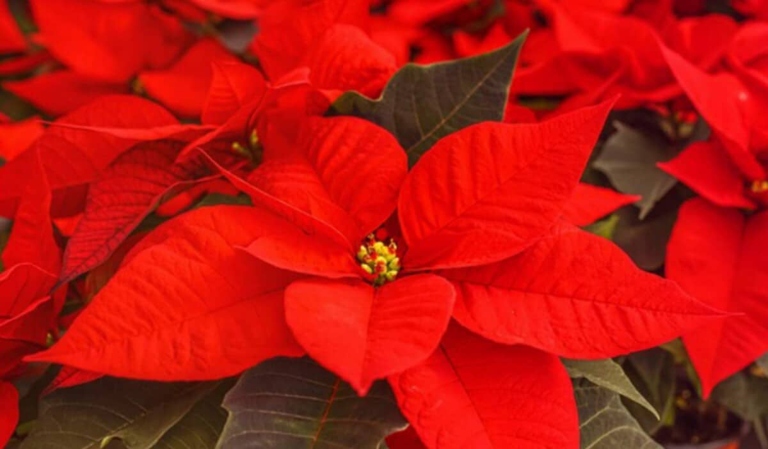
With a little care, your poinsettia will stay healthy and beautiful all season long.
Solution
If your poinsettia is dying, there are a few things you can do to revive it. Poinsettias are a popular holiday plant, but they can be finicky.
If you see any, treat the plant accordingly. First, check the plant for signs of pests or disease.
Poinsettias need well-drained, moist soil. If the soil is soggy, repot the plant in fresh, well-drained soil. If the soil is dry, water the plant. Next, check the soil.

Finally, make sure the plant is getting enough light. If the plant is in a dark spot, move it to a brighter location. Poinsettias need bright, indirect light.
With a little care, you can revive your poinsettia and enjoy it for the holidays.
Lack of Humidity
If you notice your poinsettia wilting, it may be due to a lack of humidity. To revive your plant, mist the leaves with water and place it in a humid room. You can also try placing the pot on a tray of pebbles and water. The water will evaporate and increase the humidity around the plant. The leaves will turn brown and the stems will become brittle.
Solution
If your poinsettia is dying, there are a few things you can do to revive it. Poinsettias are a popular plant during the winter holidays, but they can be tricky to keep alive.
If you see any, treat the plant accordingly. First, check the plant for signs of pests or diseases.

Poinsettias need at least six hours of sunlight per day. Next, make sure the plant is getting enough light. If your plant is not getting enough light, move it to a brighter location.
Poinsettias need to be kept moist, but not wet. Allow the top inch of soil to dry out before watering again. Finally, make sure you are watering the plant correctly.
If you follow these tips, you should be able to revive your poinsettia and keep it alive for many years to come.
Lack of Nutrients in Soil
The soil may not have enough nitrogen, phosphorus, or potassium to support the plant. If your poinsettia is dying, it may be due to a lack of nutrients in the soil. To revive your poinsettia, fertilize it with a balanced fertilizer and water it regularly.
Solution
If your plant is getting too much sun, the leaves will start to fade. Overwatering is a common problem. Poinsettias don’t like sudden changes in temperature, so keep them away from doors and windows. Poinsettias need bright, indirect light. Another problem can be drafts. If your poinsettia is dying, there are a few possible causes. Poinsettias are a popular holiday plant, but they can be finicky. Poinsettias need to be kept moist, but not wet. Let the soil dry out slightly between watering. Finally, too much or too little light can also be an issue.

If the plant is too wet, let the soil dry out. If it’s too dry, give it a good drink. If it’s not getting enough light, move it to a brighter spot. First, check the watering. Second, check for drafts. With a little TLC, your poinsettia should be back to its holiday best in no time. Move the plant away from any doors or windows. If the plant is getting too much sun, move it to a shadier spot. If your poinsettia is dying, there are a few things you can do to revive it. Third, adjust the light.
How to Prevent Poinsettia Dying
If your poinsettia is dying, there are a few things you can do to revive it. Poinsettias are a popular holiday plant, but they can be finicky.
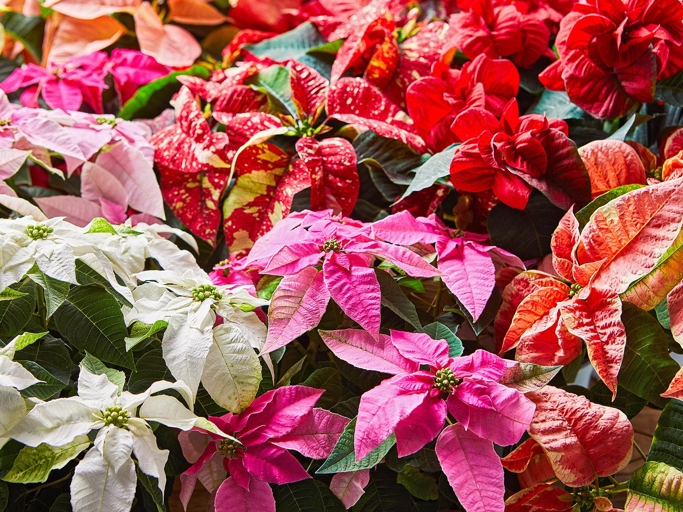
First, check the plant for signs of pests. If you see any insects or eggs, remove them and treat the plant with an insecticide.
Poinsettias need well-drained, moist soil. If the soil is soggy, repot the plant in fresh, dry potting mix. If the soil is dry, water the plant and make sure the pot has drainage holes. Next, check the soil.
Finally, check the light. If the plant is in too much or too little light, it will start to lose its leaves. Move the plant to a spot where it will get the right amount of light. Poinsettias need bright, indirect light.
With a little care, you can keep your poinsettia healthy and beautiful for the holidays.
Frequently Asked Questions
Q: What are some common causes of poinsettia dying?
A: Some common causes of poinsettia dying are over- watering, under- watering, too much or too little light, and temperatures that are either too hot or too cold.
Q: How can I tell if I am over- watering my poinsettia?
A: One way to tell if you are over- watering your poinsettia is to check the soil. If the soil is soggy or mushy, that is a sign that you are over- watering. Another way to tell is to look at the leaves. If the leaves are wilting or drooping, that is another sign of over- watering.
Q: How can I tell if I am under- watering my poinsettia?
A: One way to tell if you are under- watering your poinsettia is to check the soil. If the soil is dry or crumbly, that is a sign that you are under- watering. Another way to tell is to look at the leaves. If the leaves are dry or crispy, that is another sign of under- watering.
Q: How much light does my poinsettia need?
A: Your poinsettia needs bright, indirect light. It should be in a spot where it will get plenty of light, but not direct sunlight.
Q: What temperature is too hot or too cold for my poinsettia?
A: The ideal temperature for your poinsettia is between 65 and 75 degrees Fahrenheit. Temperatures that are too hot or too cold can cause your poinsettia to die.
Q: My poinsettia is dying, what can I do to revive it?
A: If your poinsettia is dying, the first thing you should do is check the soil. If the soil is too wet or too dry, adjust your watering accordingly. If the leaves are wilting or drooping, try giving the plant more light. Finally, check the temperature. If it is too hot or too cold, try moving the plant to a spot that is a little warmer or cooler.
Final thoughts
If your poinsettia is dying, it may be due to one of these nine causes. But don’t despair, there are ways to revive your plant. With a little care and attention, your poinsettia can thrive for years to come.
